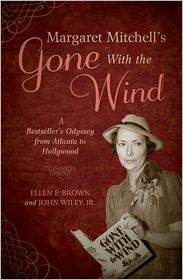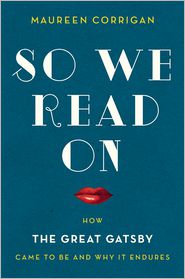Five Books that Tell the Story Behind the Story
Sometimes it seems like classic novels have just always existed: they were there before most of us were born, and seem an eternal aspect of the cultural landscape. But behind every novel is a second story, a sometimes-hidden one about how that novel came to be. And these stories-behind-the-stories are sometimes just as fascinating as the novels they produced. Here are five absorbing investigations into what lies behind five famous novels.
The Most Dangerous Book: The Battle for James Joyce's Ulysses
The Most Dangerous Book: The Battle for James Joyce's Ulysses
Hardcover $29.95
The Most Dangerous Book: The Battle for James Joyce’s Ulysses, by Kevin Birmingham
When people imagine the classic suffering novelist, they may not realize James Joyce is the original template. He struggled to get his work published in his lifetime, suffered myriad physical maladies exacerbated by constant money troubles, and loved recklessly. His novel Ulysses is one of the most difficult and most celebrated in the English language—and for a time was banned as obscene. Birmingham follows Joyce’s life from the initial inspiration for what became Ulysses in 1904 to its final vindication and publication in the U.S. in 1934. He takes what sounds like a dry legalistic plod and turns it into a thriller, with the Good Guys fighting small-minded bluenoses in the name of one of the greatest novels ever written.
The Most Dangerous Book: The Battle for James Joyce’s Ulysses, by Kevin Birmingham
When people imagine the classic suffering novelist, they may not realize James Joyce is the original template. He struggled to get his work published in his lifetime, suffered myriad physical maladies exacerbated by constant money troubles, and loved recklessly. His novel Ulysses is one of the most difficult and most celebrated in the English language—and for a time was banned as obscene. Birmingham follows Joyce’s life from the initial inspiration for what became Ulysses in 1904 to its final vindication and publication in the U.S. in 1934. He takes what sounds like a dry legalistic plod and turns it into a thriller, with the Good Guys fighting small-minded bluenoses in the name of one of the greatest novels ever written.
Margaret Mitchell's Gone With the Wind: A Bestseller's Odyssey from Atlanta to Hollywood
Margaret Mitchell's Gone With the Wind: A Bestseller's Odyssey from Atlanta to Hollywood
By Ellen F. Brown , John Wiley Jr.
Paperback $18.95
Margaret Mitchell’s Gone With the Wind: A Bestseller’s Odyssey from Atlanta to Hollywood, by Ellen F. Brown and John Wiley, Jr.
More than 75 years after its publication, it can be difficult for modern readers to understand the phenomenon that was Gone with the Wind when it first published in 1936. It won the Pulitzer Prize and was an instant bestseller, and was quickly adapted into the epic film many of us probably know better than the book. Brown and Wiley don’t waste our time by retreading Mitchell’s life, but rather focus on the mechanics of how a debut novel from an unknown writer became an instant pop culture smash hit that has maintained its grip on the public consciousness ever since.
Margaret Mitchell’s Gone With the Wind: A Bestseller’s Odyssey from Atlanta to Hollywood, by Ellen F. Brown and John Wiley, Jr.
More than 75 years after its publication, it can be difficult for modern readers to understand the phenomenon that was Gone with the Wind when it first published in 1936. It won the Pulitzer Prize and was an instant bestseller, and was quickly adapted into the epic film many of us probably know better than the book. Brown and Wiley don’t waste our time by retreading Mitchell’s life, but rather focus on the mechanics of how a debut novel from an unknown writer became an instant pop culture smash hit that has maintained its grip on the public consciousness ever since.
So We Read On: How The Great Gatsby Came to Be and Why It Endures
So We Read On: How The Great Gatsby Came to Be and Why It Endures
Hardcover $26.00
So We Read On: How The Great Gatsby Came to Be and Why It Endures, by Maureen Corrigan
Most of us meet The Great Gatsby in school at some point, when, frankly, we’re probably too young and inexperienced to really understand it—but every year people rediscover Gatsby and are amazed at what they find. Corrigan explores the genesis of this incredible novel and how it was conceived and written by a troubled genius, who died thinking he was a complete failure in his chosen field. If your memories of Gatsby are mainly of being bored stiff in a classroom, this incredible exploration will inspire you to give the book a fresh look—and you won’t be disappointed.
So We Read On: How The Great Gatsby Came to Be and Why It Endures, by Maureen Corrigan
Most of us meet The Great Gatsby in school at some point, when, frankly, we’re probably too young and inexperienced to really understand it—but every year people rediscover Gatsby and are amazed at what they find. Corrigan explores the genesis of this incredible novel and how it was conceived and written by a troubled genius, who died thinking he was a complete failure in his chosen field. If your memories of Gatsby are mainly of being bored stiff in a classroom, this incredible exploration will inspire you to give the book a fresh look—and you won’t be disappointed.
The Zhivago Affair: The Kremlin, the CIA, and the Battle Over a Forbidden Book
The Zhivago Affair: The Kremlin, the CIA, and the Battle Over a Forbidden Book
By Peter Finn , Petra Couvee
Hardcover
$20.26
$26.95
The Zhivago Affair: The Kremlin, the CIA, and the Battle Over a Forbidden Book, by Peter Finn and Petra Couvée
Not many novels are used as weapons in a war, but Boris Pasternak’s Doctor Zhivago wasn’t just any novel. When Pasternak wrote it in the 1950s, he was the Soviet Union’s greatest living poet, but he knew his story of the Russian Revolution would never be published in his own country. He had the manuscript smuggled out and published in the West, where it became a sensation. And that’s where Finn and Couvée find the amazing hook for their story, because the CIA saw an opportunity to assault Soviet hearts and minds, and had a Russian-language edition printed and smuggled into the U.S.S.R. The story of this classic novel is a spy thriller that could have been told by John le Carré; as incredible a tale as the book itself.
The Zhivago Affair: The Kremlin, the CIA, and the Battle Over a Forbidden Book, by Peter Finn and Petra Couvée
Not many novels are used as weapons in a war, but Boris Pasternak’s Doctor Zhivago wasn’t just any novel. When Pasternak wrote it in the 1950s, he was the Soviet Union’s greatest living poet, but he knew his story of the Russian Revolution would never be published in his own country. He had the manuscript smuggled out and published in the West, where it became a sensation. And that’s where Finn and Couvée find the amazing hook for their story, because the CIA saw an opportunity to assault Soviet hearts and minds, and had a Russian-language edition printed and smuggled into the U.S.S.R. The story of this classic novel is a spy thriller that could have been told by John le Carré; as incredible a tale as the book itself.
Not many people can befriend Truman Capote, write a Pulitzer-winning debut novel, and then retire to a simple, quiet life in their hometown for the next six decades—but that is precisely what Harper Lee did (before letting the world back in, earlier this year, with the announcement of Mockingbird “sequel” Go Set a Watchman). After decades of the author refusing interviews, journalist Marja Mills contacted her, then living with her sister, Alice, in Monroeville, Alabama, and began a friendship that saw the sisters inviting Mills to move into the house next door. For nearly two years Mills spent time with them, and Lee finally gave her permission to write and publish this story, which offers an unprecedented insight into the woman who wrote one of the greatest novels of the 20th century, and then promptly fell silent.



